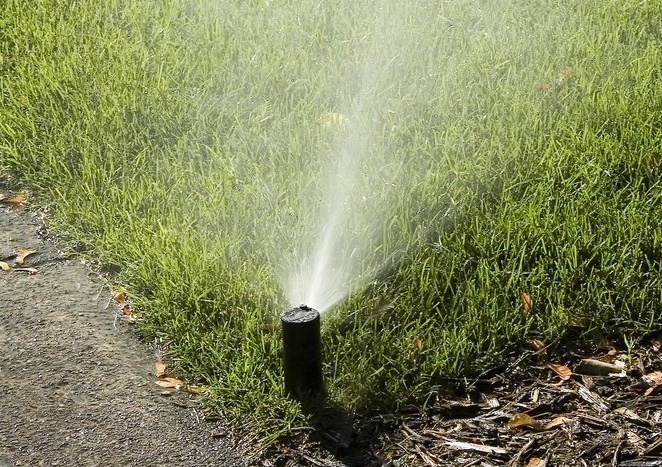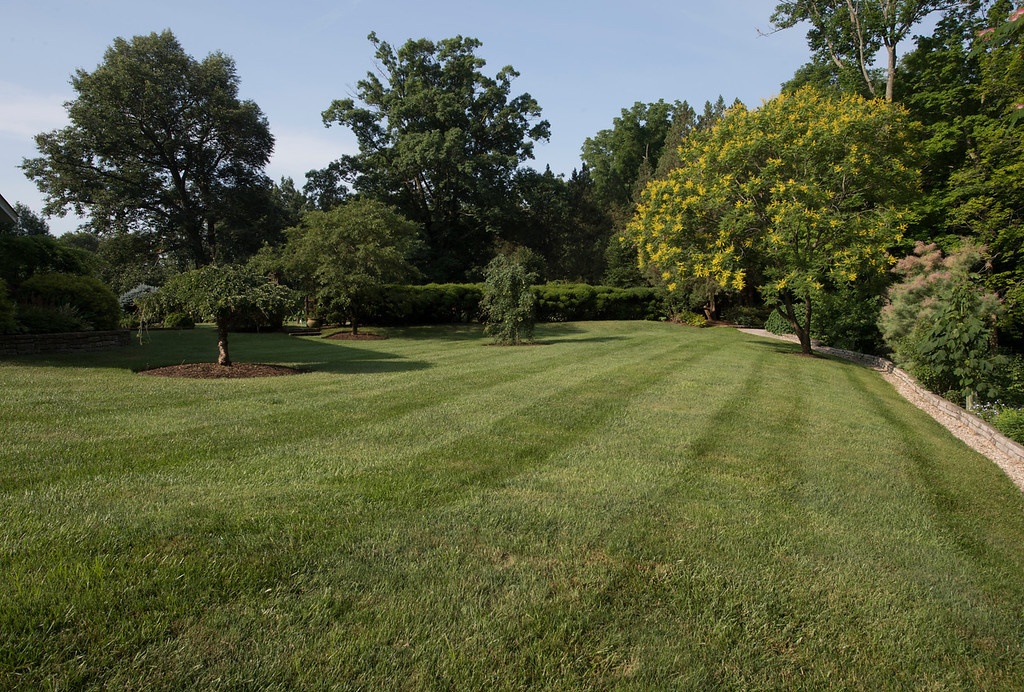Summer is over, and fall is upon us. As the weather cools down, you may notice some bare spots in your lawn from summer stress, disease, drought and pests. Fall is by far the best time to aerate and overseed your lawn because it allows you to fill in bare areas, increase the density of thin areas and thicken your lawn overall.
In addition to filling in these areas, overseeding has many other benefits for lawns, including those that may appear perfectly fine. Introducing the latest and best grass seed varieties helps to improve your lawn’s resiliency, helps lawns to be more resistant to turf diseases, and serves as a natural weed control method of preventing weeds growing in weakened turf.
Before overseeding, you’ll want to aerate your lawn. Aeration is the process of pulling out small soil cores (also known as plugs) to allow water, oxygen and nutrients to penetrate the root zone.
Performing aeration and overseeding together provides great conditions for new seed to take root, as it this soil-to-seed contact allows new grass to emerge from aeration holes, and the plugs on the surface.

It’s critical that you properly water your lawn after aeration and overseeding. Not doing so could have negative results such as a lawn that won’t grow, wasted money, or needing to re-seed all over again.
For extra tips on aeration and overseeding check out our Aeration and Overseeding Checklist.
Below, we’ll provide you with expert tips on best practices for watering your lawn after aeration and overseeding.
The Basics of Watering New Grass Seed
Watering your lawn may seem as easy as firing up the old sprinkler in the garage or standing over spots with a hose, but proper watering actually has a little more science behind it.

Many people are confused regarding the best time to water grass. These misconceptions about proper watering exist both for watering an established lawn, as well as watering new grass after aeration and overseeding.
New grass plants don’t have the root systems of an established lawn. Therefore, new grass needs more attention until it matures, which can take anywhere from six to nine months. During this time, it’s critical that you water your lawn, and once you start watering, it needs to be consistently continued. If you stop watering your lawn, the new grass could dry out and die.
When it comes to proper watering techniques, always use a sprinkler system rather than standing and spraying areas with a hose. Sprinklers give slow, even amounts of water to all areas of the lawn and don’t runoff as easily. As you water your lawn, stay off tender areas as much as possible, especially during the first few weeks when new shoots are germinating or when the soil is soft.
How to Water After Aeration and Overseeding
Once you’ve aerated and overseeded your lawn in the fall, you’ll want to follow up with watering. To keep you from guessing what to do next, we’ve laid out some details and a schedule for how to water your lawn after aeration and overseeding. This includes when to water your lawn and how often to water your lawn.
Watering Before Seed Germination (7 to 21 days after aeration and seeding)
Germination is the process by which a plant grows from a seed. Before the grass seeds germinate, follow this guideline, “less water, more frequently.” Germination takes anywhere from 7 to 21 days depending on the type of grass, nutrient levels and soil temperatures.
The idea behind this technique is that you want to keep the seed moist before it germinates. This may mean watering two to three times per day but doing so for a shorter period of time (15-20 minutes) in each location.
Watering Four to Five Weeks After Seed Germination
Following germination, you’ll want to water less frequently using more water (this time: “more water, less frequently”). The key is to soak the soil to a depth of two to three inches. This means running sprinklers for 45 to 60 minutes in each location three times per week.
Soil moisture at a deeper level encourages deeper root development. When the soil is only moist in the top inch, you’ll end up with superficial roots in only the first inch of soil.
To measure how much water you’re getting, place tuna cans in different areas of your lawn. You should get about one inch of water each time you water for a total of three inches per week. You can also use a rain gauge to measure rainfall and adjust watering accordingly.
Watering Five Weeks to Nine Months After Seed Germination
As time goes on, water your lawn so it gets two inches of water per week. Even though your lawn may look green and established on top, it takes some time for the root system to mature as well. This is why it’s so important to continue regularly watering your lawn, and it may mean watering once or twice per week if you’re not getting enough natural rainfall.

New lawns are more vulnerable to drought damage in their first year. It’s not uncommon for people to seed areas of their lawn in the fall and then have them thin or die-back the next summer, if it doesn’t rain for several weeks or more.
Additional Recommendations of Lawn Care Treatments
After the grass has germinated, your lawn care company can adjust lawn care treatments as necessary to encourage new grass growth while still treating for weeds. Lawn care companies know when the right time is to start treatments again, which takes the stress off of you.
It’s important to keep up with aeration and overseeding for your lawn. Aeration isn’t a one-and-done deal, and it’s a good idea to aerate your lawn annually. Also, overseeding is always a good addition in the fall even if your lawn isn’t looking sparse. Overseeding helps keep your lawn thick and healthy, which is what most homeowners desire.
Working With Your Lawn Care Company in Cincinnati, Dayton or Northern Kentucky
If your lawn needs some help recovering from a rough year, Oasis Turf & Tree offers aeration and overseeding services, as well as other lawn care treatments to rejuvenate your grass.
If you ever have any specific questions about aeration, overseeding or the best time to water your lawn in Ohio or Northern Kentucky, the lawn technicians at Oasis Turf & Tree are always available to help.
Lawn care is a team effort, but you play the most important role in helping your new lawn to develop. Doing a great job at proper watering will have you reaping the benefits of thick, healthy lawn that you and your family can enjoy all year long.
Request a free estimate to learn how we can help you improve your lawn with aeration and overseeding services in Cincinnati, Dayton or Northern Kentucky. Always feel free to call us at 513-697-9090 with any questions you may have.
